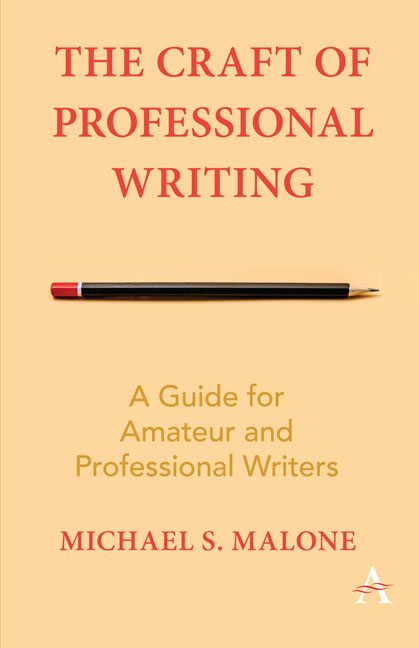Book contents
- Frontmatter
- Dedication
- Contents
- Introduction
- Part One Basics
- 1 Gathering Information
- 2 Words, Sentences and Paragraphs
- 3 Narrative and Composition
- Part Two Corporate Careers and Disciplines
- Part Three Writing Careers in Media
- Part Four The Work of Professional Writing
- Further Reading
- Suggested Assignments
- Index
1 - Gathering Information
from Part One - Basics
- Frontmatter
- Dedication
- Contents
- Introduction
- Part One Basics
- 1 Gathering Information
- 2 Words, Sentences and Paragraphs
- 3 Narrative and Composition
- Part Two Corporate Careers and Disciplines
- Part Three Writing Careers in Media
- Part Four The Work of Professional Writing
- Further Reading
- Suggested Assignments
- Index
Summary
You can't write anything if you don't have anything to write about.
That observation may sound stupid and obvious, but you'd be amazed how many poets, columnists, feature writers and novelists try to force words onto the page without any real knowledge of what they are writing about. Some are even reduced to making up “facts” and sources that aren't real. Such are the demands of money, deadline and ambition. Sometimes they pull it off; but not for long.
Real, honest writing— even if it is fiction— requires real, honest information on what you are writing about. And the only way to get that information is to go out looking for it. That means interviewing sources or eyewitnesses, or visiting the sites of key events, or digging deep into official records, or searching far out into the hinterlands of the Internet. The closer you can get to actual participants or witnesses to the event you wish to describe, including the documents they leave behind— the more legally certified the documents you find, and the more verified and cross- referenced the file you find— the better off you are going to be.
Why do this? Because you owe it to yourself as a professional to get things right. And because you owe it to your readers, your client or your employer not to mislead them or place them in legal or financial jeopardy. Sound overdramatic? Wait until you get a story wrong.
We once worked for an editor who was the very model of a conscientious reporter— including checking and double- checking every factual claim made by his staff of young reporters. At first we thought he was overly careful, at the expense of stripping some of the power out of our stories. Then he told us of an experience from his own days as a young reporter.
It seems that, while still little more than a rookie, he wrote a profile of a fast- growing new company that had a hot new product, skyrocketing sales and the prospect of even better days ahead.
- Type
- Chapter
- Information
- The Craft of Professional WritingA Guide for Amateur and Professional Writers, pp. 7 - 12Publisher: Anthem PressPrint publication year: 2018



